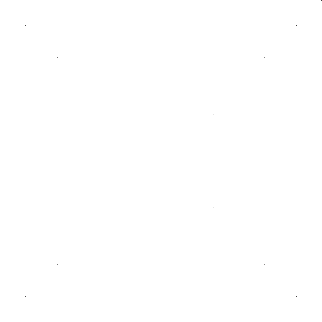MCB-DV-8066
The End of the Alphabet
“I can't go back to where I used to be. A wondrous place. Every turn a surprise.”
Walt Disney, Aladdin
Mit ihrem Musical auf Rollschuhen The End of the Alphabet inszeniert Lea Moro das Tanz-Solo als fragile und gleichzeitig pompöse Form. Das Musical auf Rollschuhen deutet einen Bewegungsgestus an, der Erwartungen auf Virtuosität und Dynamik weckt. Zwischen scheinbar mühelosem Gleiten und staksender Behäbigkeit begibt sich die Performerin auf einen extravaganten Alleingang. Lustvoll stellt sie sich der permanenten Herausforderung. Begleitet wird diese prekäre Kür von Antonio Vivaldis barockem Streichkonzert Die vier Jahreszeiten (1725). Wie bereits in ihren vorherigen Stücken Le Sacre du Printemps, a ballet for a single body und (b)reaching stillness bedient sich Moro damit erneut einer klassischen Musikkomposition. Die Texte zum Stück wurden aus bestehenden Musicals wie Aladdin oder Mamma Mia und unterschiedlichen Quellen von Chansons bis Ratgeberliteratur zusammengetragen. Auf Vivaldis oft gehörte Streichersätze gesungen, werden sie zu eingängigen Musicalhits. Diese Songs strukturieren die Dramaturgie des Stückes, geben jedoch kein verbindendes Narrativ vor. Ohne es konkret zu benennen, verhandeln die Songs Momente, in denen vertraute Zustände zu Ende gehen. Souverän die Balance haltend, lenkt Lea Moro das Publikum von einer Stimmung in die nächste. The End of the Alphabet bietet einen düsterhumorvollen Raum für ambivalente Assoziationen, undeutliche Empfindungen und melodramatische Szenarien.
// ENGLISH //
With The End of the Alphabet Lea Moro stages the dance-solo as a fragile and yet pompous form. The musical on roller-skates evokes a wide range of movements, that imply virtuosity and dynamism. The performer embarks on an extravagant path alone, at times simply sliding effortlessly through the space, sometimes stalking ponderously around, all the while facing this permanent challenge with enthusiasm. This precarious skating endeavor is set to the score of Antonio Vivaldi's baroque violin concerto The Four Seasons (1725). Again, as in her previous pieces Le Sacre du Printemps, a ballet for a single body and (b)reaching stillness, she uses classical music. The performance's texts are drawn from existing musicals such as Aladdin or Mamma Mia and different other sources ranging from French chansons to self-help literature. Set to Vivaldi's score, these sources turn into catchy musical hits. The songs provide the structure for the evening's dramaturgy, without defining an overarching narrative for the evening. Without naming it concretely, the songs grapple with moments in which familiar states come to an end. Always keeping her balance with aplomb Lea Moro takes the audience from one atmosphere to the next. The End of the Alphabet creates a dark and humorous place for ambivalent associations, confusing impressions and melodramatic scenarios.
// CAST & CREDITS //
CHOREOGRAFIE, TANZ: Lea Moro
DRAMATURGIE: Linda Sepp, Maja Zimmermann
MUSICAL-SONGS: Jana Sotzko
LICHTDESIGN: Annegret Schalke
BÜHNE, KOSTÜM: Cristina Nyffeler
PRODUKTIONSDRAMATURGIE: Marie Schmieder
GRAFIKDESIGN: Vincenzo Fagnani
DRAMATURGISCHE BEGLEITUNG: Igor Dobricic
Eine Produktion von Lea Moro in Koproduktion mit K3 – Zentrum für Choreographie | Tanzplan Hamburg, Tanzhaus Zürich und SOPHIENSÆLE.
Gefördert aus den Mitteln des Hauptstadtkulturfonds, sowie von Stadt Zürich Kultur, Kanton Zürich – Fachstelle Kultur, Pro Helvetia – Schweizer Kulturstiftung und Hamburgische Kulturstiftung.
Unterstützt von der Ernst Göhner Stiftung.
Mit Dank an die Georges & Jenny Bloch Stiftung, Tanzfabrik Berlin, Wiesen55 e.V. und Aula / Milchhof Berlin e.V.
Dank an: Anna Mülter, Andres Bucci, Theresa Stroetges und Pirkko Husemann
[msb]
Powered by Froala Editor
http://tanzforumberlin.de/922.php